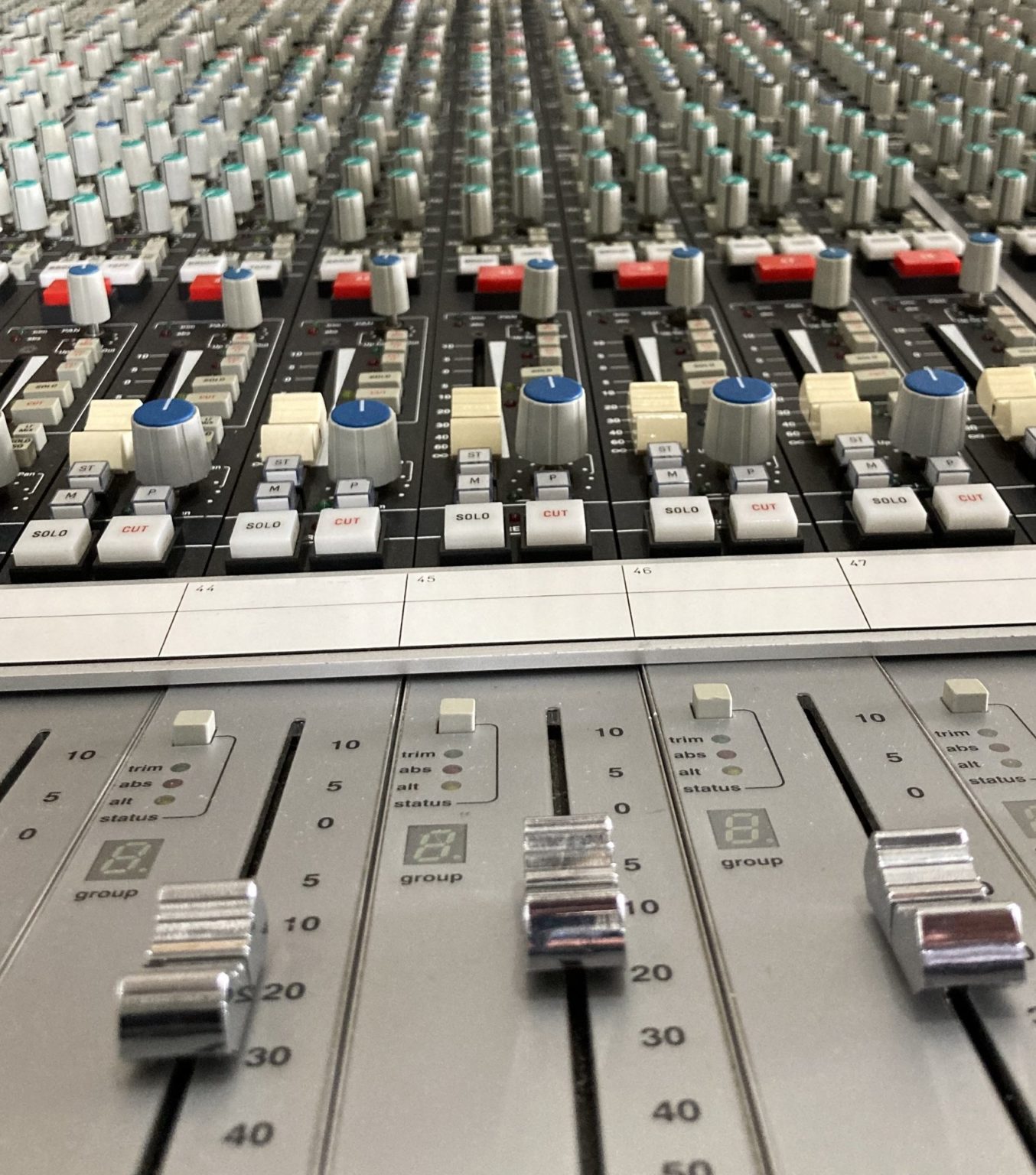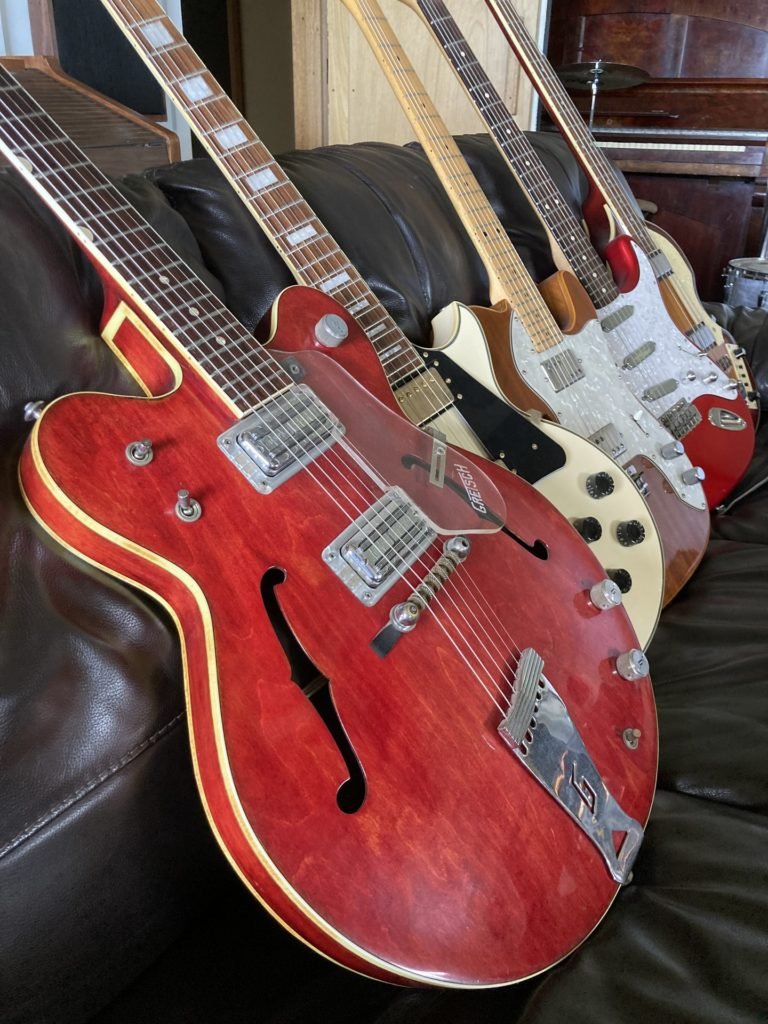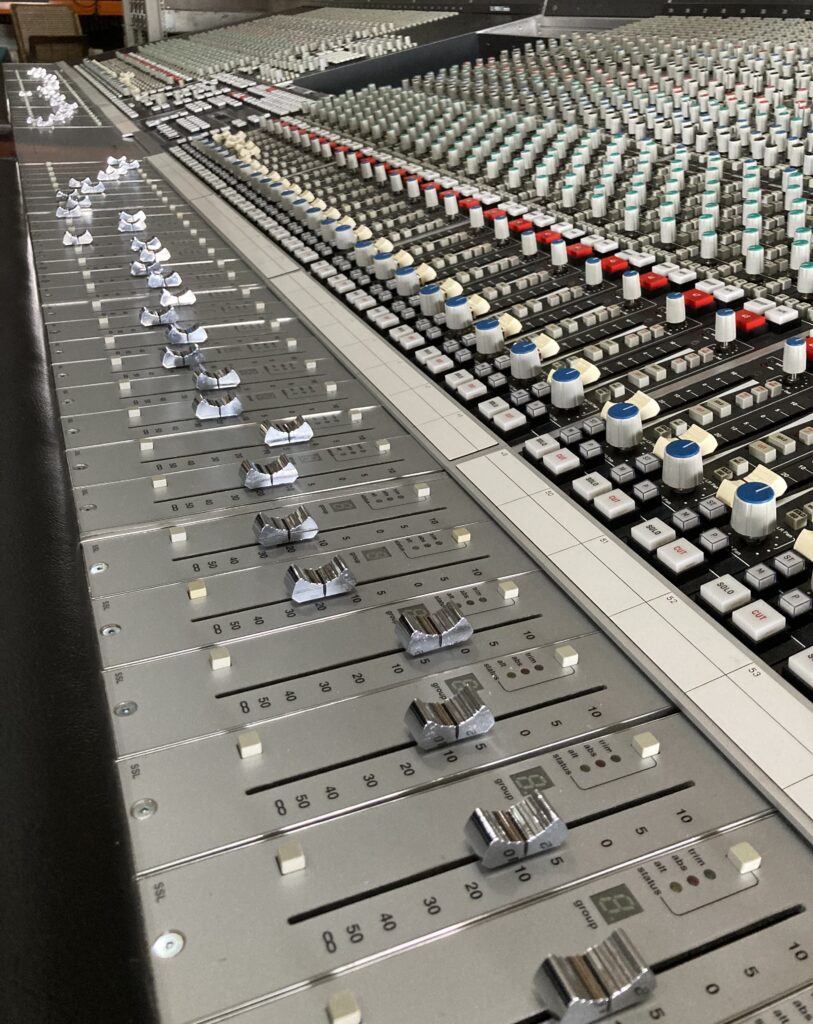News
12 May 2022
Listen Here: Five For Twenty-Two

Subscribe to CX E-News
There are so many things to consider during a song production that’s it’s almost impossible to get everything sounding just right. Perfection is a myth anyway when it comes to art, but that doesn’t mean you shouldn’t still try to capture something great. With that in mind, here are five things to consider avoiding or improving upon before the year’s out, so you can get excited about your next music release.
Let me just preface what follows here by saying that most of the music that’s penetrated the inner sanctum of your high-rotation playlist has likely done so thanks to the inventive musicianship of some highly skilled artists working in concert with some equally dedicated craftspeople, to create an amazing product that’s managed to appeal to you on multiple levels.
These musicians haven’t pulled off this minor miracle by half-arsing their work, settling for second best or leaving most things to chance. They’ve understood that getting things sounding right from the get-go takes work, dedication and a determination to never settle for second-rate songs or performances. If nothing else, let this aspect of their work have the most influence upon yours, rather than their musical style or outward appearance.
1: That’ll Do
This is probably the worst mistake every single one of us makes at some point. It’s a very hard decision to resist at times, although the real problem occurs when you start getting into the habit of it. Once in a while is okay, but 10 times a day quickly turns your work into slop.
Saying ‘That’ll do’ to a group of musicians you’re recording, for example, is usually the moment when mediocrity waltzes right through the door. If you don’t guard against it your recording session can quickly find itself on a slippery slope to nowheresville. To avoid reaching this juncture, try pre-empting it. Don’t wait ’til you’re suddenly confronted with the dilemma of whether to push a musician harder or call stumps on their recording. If you leave it ’til then your tendency will be to let both of you off the hook, but this is often the wrong decision. (I include you in this fishing metaphor because it’s easier for you to move on in this situation too – and who specifically are you letting off the hook here, anyway?)
If you’re uncertain whether you’ve captured ‘enough’ of a certain performance for the purposes of a convoluted editing job, you probably haven’t – well, not one that’s great at least.
Try discussing this issue with the artist or band you’re working with beforehand. Tell them you never want to get to the point where you have to say ‘That’ll do’ to any of them during a recording session, so that everyone knows you’re determined to capture only their best performances. It will also subconsciously prime them to deliver their best right from the get-go.
The same applies when you’re recording yourself at home. Don’t think you’re exempt here from the same rules that apply to others. Twenty mediocre performances can be made into one track in the wee small hours of the morning via a million crafty edits, that’s true. You might even manage to compile a ‘competent-sounding take,’ but will it be great? Probably not.
2: Great Song, Minimal Arrangement
Directly related to the concept of ‘That’ll do’ is the production problem of adding more tracks to cover up, support or bolster average performances – there are several issues at play here too. Less than remarkable performances tend to sound exposed rather than awesome when pushed forward in a mix, which means they tend to be pushed back and thus require supporting tracks to bolster their effectiveness. This approach can lead you off course rapidly, and the results are often (so-called) ‘performances’ that lack flair, clarity and definition. Too many mediocre tracks masquerading as one only tend to blur and abrade the detail and impact of one another. One amazing performance meanwhile, is better sounding, easier to mix and vastly more satisfying to a listening audience. We know all this of course, and yet still we try to fudge our way around the problem when confronted by it.
So don’t get attached to a bunch of mediocre takes and think that lumping them together will somehow get you out of the mess you’ve made. Do you really think these parts will sound awesome as a group? Occasionally they might, that’s true. But far more often than not, they won’t. Try to stick to your original Plan A of capturing that one awesome performance that can shine in your mix like a beacon. Productions that feature fewer tracks, brilliantly played, will always sound vastly superior to ones that have 150 tracks of performances that combine to form a six-piece band arrangement. These are much harder to mix, nowhere near as detailed sounding, and will sometimes sound smaller and quieter overall.

3: Learn To Arrange Your Music
This is a difficult thing to discuss in one or two paragraphs, but in short, great arrangements will typically sound far more interesting, entertaining and intriguing than convoluted or bloated ones.
Many song recordings these days have the advantage (and distinct disadvantage) of being tracked in a private studio at low cost, often with little preparation done on a song’s arrangement. The problem with this approach is often (but not always) that once committed to tape (or hard drive) it’s human nature to try to find merit in the recorded performances. The longer each one is kept the more attached to them you become, for good or ill. If individual overdubs clash with one another, or too many are played for the full length of the track as an aural fishing exercise, you may end up with a song that lacks shape and dynamic, reveals its hand too early, and bores the pants off you ninety seconds in.
Try avoiding those additional overdubs that start on bar one wherever possible. Chances are most of them need to start elsewhere, and if you can determine that now, you should limit where you play them to only those areas where they’re required.
Even when you’re not sure where the song is headed, just remember, being ruthless and decisive about the arrangement at various points during the production can be far more beneficial to the song than simply capturing everything – good, bad or indifferent – and never editing, culling or limiting the parts to specific sections of the song.
In a nutshell, don’t just record a bunch of performances that straddle the entire track and expect your song to have much in the way of merit or intrigue.
4: Mixing Out Of Your Depth
When you’re an experienced mix engineer, all the issues mentioned thus far are quickly exposed as problems that need resolving. For the unsuspecting ‘mixing enthusiast’ however, these problems can fly under the radar altogether, or be misconstrued as unresolvable.
In many cases, it’s not until mixdown that a piece of music is even tested to determine whether all the parts even go together! This is particularly true of songs that have ‘evolved’ during tracking or where too many musical decisions have been left until the mix. Indeed, sometimes overdubs are only kept with the strict proviso that they may or may not be used in the final mix, but unfortunately, this fact is often the one thing that later gets forgotten!
Mixing is as much about learning what to omit, edit, prioritise and transform, as it is about fancy EQ curves, compression ratios and automation passes. There are very few occasions indeed where mixing a piece of music is simply about representing everything on a timeline in a relatively non-judgemental, democratic fashion. Frankly, I can’t remember when I last did that, or indeed if I ever have!
Mixing is, in some ways at least, a bit like building a 1000-piece jigsaw puzzle that you bought from the Op Shop; you can’t assume all the bits are there in the first place, some of the pieces have been chewed by a two-year old and other bits are from different puzzles altogether. The trick is identifying these strays early on so you don’t waste 10 hours trying to make them fit.
If you’re too close to a production or you’re relatively inexperienced as a mix engineer, you may find yourself tied up in knots determining any of this before you’ve got very far.
If you’re primarily a musician, and that’s your obvious strength, consider allowing a professional mix engineer whom you trust to mix at least some of the more complicated songs. The same logic applies if you’re the producer. In the end, just because you ‘love music’ and know how to ‘listen deeply,’ that doesn’t automatically make you a mix engineer. That’s a fallacy. It’s like saying that because you love driving cars, you know how to build one.

5: Behold, The Source!
If you can’t say “Wow!” about an instrument you’re recording, no matter who’s playing it or what its context may be, it needs more work before you commit it to the music. All sounds start at the source (we all know this too, don’t we?) and if you don’t put the work in here to make a sound the best it can possibly be, your production will be the worse for it. The better suited to the music a source is, and the more amazing it seems in your specific context, the better it will inevitably be.
On the flipside, if you’re already shrugging your shoulders, admitting that “Yeah, it sounds okay, I guess…” you’re singing yourself to shipwreck. You don’t want a Capital L for ‘Lazy’ tattooed on your forehead, do you? Then don’t do this. Stop what you’re doing and make some changes (that may involve doing some work). Search for something better that excites, inspires or convinces you. You wanna be saying: “Now, that is an awesome sound!” not, “Yeah, that should be okay.” Who on earth is going to be excited about the song when it comes out if you couldn’t even muster up some excitement about it in the studio?
There are so many things you could do to improve a source… literally. Change the player, the mic, the amp, the strings, the venue, the lighting, the lyrics, the chord structure, the attitude… whatever it takes. Just don’t do nothing.
That’s the beauty of working with music and audio; there are limitless possibilities.
Why choose one that’s boring? So you can bore your listeners? I doubt that’s your aim.
Andy Stewart owns and operates The Mill studio in Victoria, a world-class production, mixing and mastering facility. He’s happy to respond to any pleas for pro audio help… contact him at: andy@themill.net.au or visit: www.themillstudio.com.au
Subscribe
Published monthly since 1991, our famous AV industry magazine is free for download or pay for print. Subscribers also receive CX News, our free weekly email with the latest industry news and jobs.





